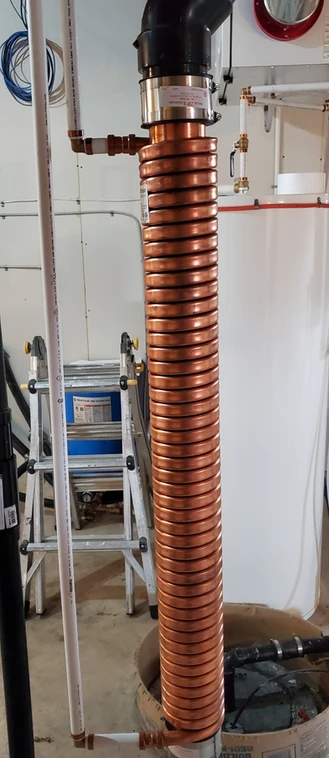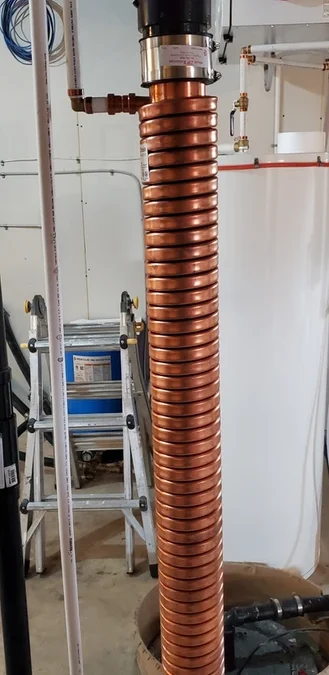Saving money from the drain water is maybe not the first place you think of when it comes to saving money, but this subtle copper assembly in your basement is doing that.
The Drain Water Heat Recovery system recovers heat from your wastewater stack and preheats the water entering your water heater or the cold water entering your mixing valve at the shower. DWHR only work when hot water is being used and drained at the same time, if you fill a tub full of hot water then drain it, this system will not recover any heat.
When you are using hot water and draining the water at the same time like a shower, the hot water going down the drain heats the internal copper pipe of the DWHR, at the same time the water entering the water heater to be heated is circulated around the DWHR internal pipe and is pre-warmed.
When I first heard of Drain Water Heat Recovery’s being installed, I was very skeptical about how well they would work. It’s hard to imagine that water flowing down a vertical pipe would have a chance to warm anything. But after a little digging and a few tests of my own I was surprised to find how well they were able to recover heat. Copper’s ability to transfer heat and water’s ability to adhere to a surface is amazing and is key to how well DWHR’s can transfer heat into the incoming water.

For a 2 person, household savings would be around $65-$75/year with an electric water heater here in Manitoba. There are lots of variables to the actual savings, the temperature of the shower, how long, how many, the flow rate of the showerhead, gas or electric water heater and efficiency of the heater. I did all the calculations manually from my testing and compared it to this online calculator and found it to be accurate to my findings once you set the parameters. Click here for the online calculator to figure out your savings.


